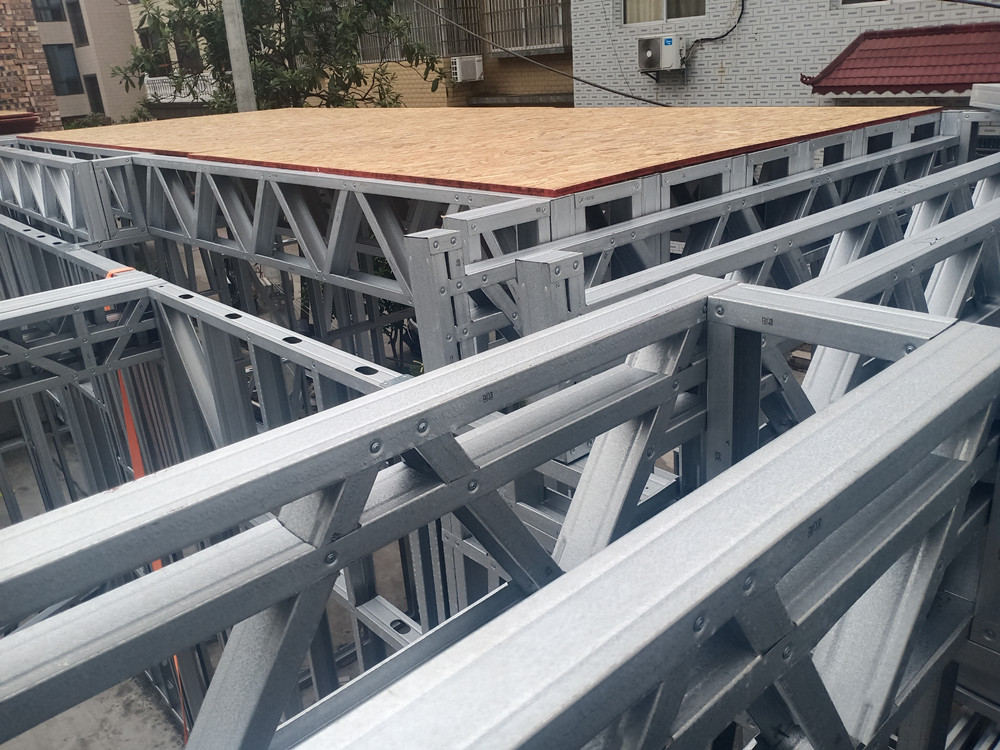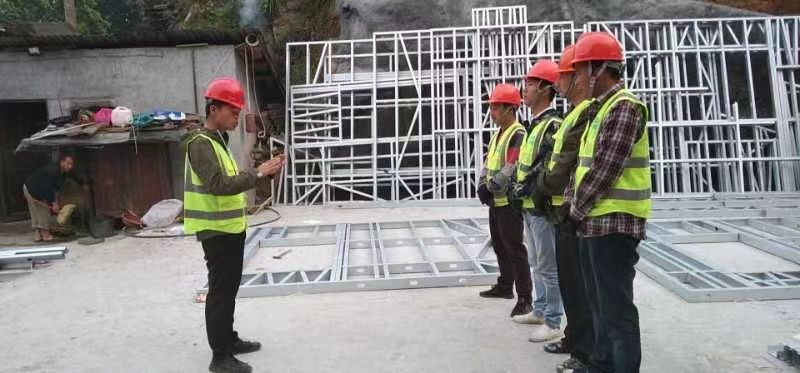Steel structure villas can be eco-friendly, but their environmental impact depends on design choices, material sourcing, and lifecycle management. Below is a structured analysis of their sustainability, consolidated into five key dimensions:

1. Material Sustainability
•Recyclability: Steel is 100% recyclable without quality loss. A typical steel structure contains 25–30% recycled content, reducing reliance on virgin resources.
•Resource Efficiency: Prefabricated steel components minimize waste (e.g., only 2–5% scrap vs. 10–15% in traditional construction).
•Carbon Footprint: Steel production emits 1.85 tons of CO₂ per ton of steel (2025 global average). However, using electric arc furnaces (EAFs) with recycled scrap can cut emissions by 50–75%.
2. Construction Phase Impact
•Reduced Site Disturbance: Lightweight steel requires smaller foundations and less earthmoving, preserving local ecosystems.
•Lower Water Usage: Steel fabrication uses 90% less water than concrete production.
•Pollution Control: Factory-based manufacturing reduces dust, noise, and chemical runoff compared to on-site concrete pouring.
3. Energy Efficiency in Operation
•Thermal Challenges: Steel’s high conductivity can lead to heat loss/gain. Mitigated by:
•Insulated panels (e.g., SIPs with R-values up to 40).
•Reflective coatings or green roofs to reduce cooling loads.
•Renewable Integration: Steel roofs are ideal for solar panel installations due to durability and load-bearing capacity.

4. Lifecycle and End-of-Life Management
•Durability: Properly maintained steel structures last 50–100 years, reducing rebuild cycles.
•Deconstruction Potential: Bolted (not welded) steel frames allow easy disassembly and material reuse, aligning with circular economy principles.
•Landfill Avoidance: Over 98% of steel is recycled or repurposed, unlike concrete, which often ends in landfills.
5. Environmental Trade-Offs and Mitigation
•Mining Impact: Iron ore extraction degrades habitats. Solution: Prioritize recycled steel and certify suppliers (e.g., LEED or BREEAM standards).
•Chemical Treatments: Anti-corrosion coatings may contain volatile organic compounds (VOCs). Opt for low-VOC or plant-based alternatives.
•Embodied Carbon: High initial emissions can be offset by:
•Carbon capture in steel plants (e.g., HYBRIT technology).
•Energy-efficient operational designs (e.g., passive solar heating).

Ruijie Steel Structure Villa Company Construction Team
Case Studies in Sustainability
•Net-Zero Steel Homes in Scandinavia: Combine recycled steel, geothermal heating, and photovoltaic systems to achieve carbon-neutral operation.
•Singapore’s Green Mark Villas: Use prefab steel with vertical gardens and rainwater harvesting, reducing lifecycle emissions by 35%.
Conclusion
Steel structure villas have significant eco-friendly potential but require conscious material sourcing, energy-efficient design, and lifecycle planning. When optimized, they outperform traditional materials in recyclability, waste reduction, and adaptability to green technologies. For maximum sustainability:
1. Source high-recycled-content steel with EAF production.
2. Integrate passive design and renewables.
3. Adopt modular construction to minimize waste.
While not inherently "green," steel villas can be a cornerstone of sustainable architecture when aligned with circular economy principles and innovative technologies.